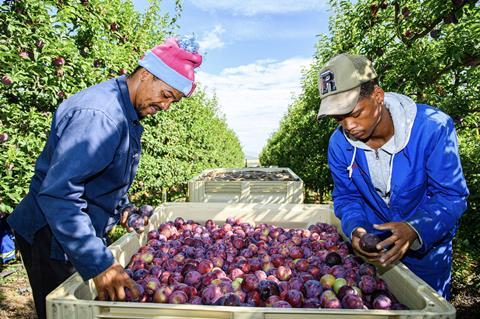Exporters say they are in a stronger position following the resolution of port strikes in October

Hortgro has said that South Africa’s stonefruit industry is back running at full speed, with exporters noting that they are in a stronger position following last year’s port strikes.
A port and rail worker strike last October caused holdups in fruit sendings out of South African ports.
However with the industrial action now resolved and efforts in the off-season to smooth the service, Hortgro said that European buyers could expect ”efficient and high-quality” deliveries.
“There is a much closer working relationship between the port users and the port itself now, as well as more collaboration and information sharing,” confirmed Jacques du Preez, general manager of trade and markets at Hortgro.
“While we have experienced some delays due to the port going wind and fogbound, and some vessel ranging, shipping has been much more reliable and even so far this year.”
Plum quality is looking good this season despite slightly smaller sizing for the early cultivars and volumes lower than expected. As a result, the estimate for the remainder of the season has been adjusted downwards, however Hortgro stressed there was enough fruit to service all markets.
The outlook for sizing on the mid- to late-season cultivars is expected to be much better.
The latest forecast comes against the backdrop of a tough year in terms of profitability for plum growers, and Du Preez believes it will be several years before the sector is back in growth.
“After the terrible past three seasons for returns, we anticipate the industry will go into a consolidation phase,” he said. “Plum growers have suffered average net losses for the past three seasons.
”There is still a lot of younger orchards that need to reach their full crop, but we will most likely not see an increase in the total area planted to plums in the next couple of years.”
Despite the challenges growers are continuing to focus on improving their environmental footprint.
The industry has used a carbon calculator since 2011 as part of the Confronting Clime Change (CCC) initiative, which set out to support the South African fruit and wine sectors by identifying the risks and opportunities around climate change.
The CCC initiative includes a regularly updated online carbon footprinting platform, as well as a series of regular industry engagement workshops, a range of commodity-specific industry benchmark reports, and the latest energy and emissions-related news and information.
“Reducing our carbon footprint is an important part of our plans, and we’ve had numerous research projects ongoing for a number of years now,” Du Preez added.



